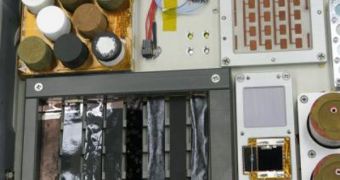New composite materials on the nanoscale have recently been developed by experts at the Rensselaer Polytechnic Institute (RPI), and are now ready for test deployment. They will be carried to the low-Earth orbit by the space shuttle Atlantis, during its scheduled November 16 launch. When the spacecraft docks at the American port of the International Space Station (ISS), the materials will be deployed there, and will endure the harsh conditions of outer space, and the effects of microgravity.
“We're very excited to have this experiment installed in the ISS, and to see how the new material performs in space. In a laboratory setting, the wear rate of the material is four orders of magnitude lower than pure PTFE [polytetrafluoroethylene], which means it is considerably more resistant to wear and tear. Just as important, these advances don't increase the material's coefficient of friction, which means the increase in durability won't come at the expense of creating extra friction,” RPI Department of Materials Science and Engineering Professor Linda Schadler says.
Once on the station, the two new nanoscale composite materials will be installed in a Passive Experiment Carrier (PEC) space on the outer hull, and subjected to the rigors of space, which include large amounts of ultraviolet (UV) radiation, as well as temperatures ranging from -40 to +60 degrees Celsius. The first material is made out of nanoscale alumina particles and polytetrafluoroethylene (PTFE), also known as Teflon. The end-result is a product that is stronger and more durable than conventional PTFE, while also almost as nonstick and slippery as its predecessor.
The second material is a conductive polymer nanocomposite (CPN). Schadler worked with former RPI postdoctoral researcher Justin Bult on them, and had them ready for deployment in less than a week. “It was an exciting week and we weren't sure if the composites would hold up to the rigorous testing imposed on them to determine if they could even be launched into space. It was a thrill when some of them did, and to see the pictures of them mounted in the PEC,” the expert adds. The new materials could lead to the development of new cooling systems for spacecraft, and electronics devices.

 14 DAY TRIAL //
14 DAY TRIAL //